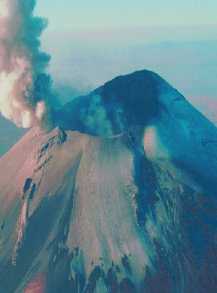This is a volcanic "cone".
Click on image for full size
Courtesy of USGS
Volcanoes
There are several ways in which a volcano can form, just as there are several different kinds of volcanoes. Many of the volcanoes on the Earth's surface are part of the "Pacific Rim of Fire".
During the eruption of a volcano, flowing lava and ashharden around the opening out of which they came, forming a large cone. This cone is what we know as a volcano.
Among the different kinds of volcanos are:
You might also be interested in:
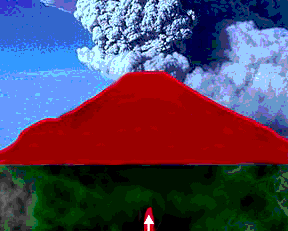
Volcanoes form when hot material from below risesand leaks into the crust. The hot material, called magma, rising from lower ground, gathers in a reservoir called the magma chamber. Eventually, but not
...more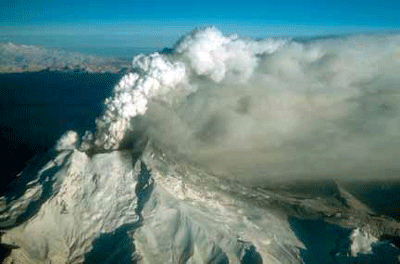
Ash is formed as a volcano erupts when rocks made by the volcano blow apart into millions of tiny pieces. The rocks are still very hot, because they just formed from lava. If the hot rocks come into contact
...more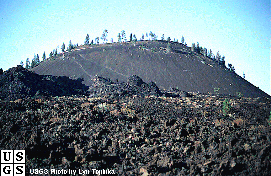
Cinder cones are simple volcanoes which have a cone shape and are not very big. Compare the size of this volcano to the strato-volcano in this image. They are usually made of piles of lava, not ash. During
...more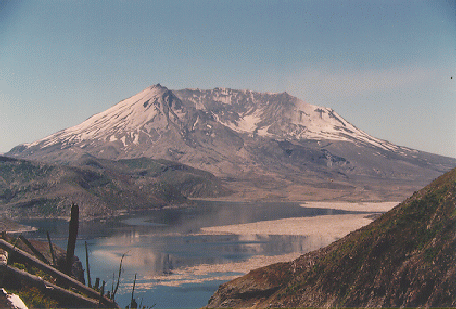
Mount St. Helens, a volcano on the west coast of the United States, has been quiet for 18 years. But in the last week it has not been quiet at all! It has been puffing steam and ash and a flow of lava
...more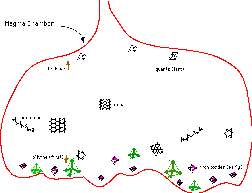
When magma is erupted onto the surface in the form of lava, it becomes silicate rock. With each different eruption of the volcano, lava which comes to the surface is made of slightly different chemicals,
...more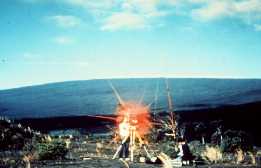
This image shows scientists monitoring the changing shape of a shield volcano with lasers.
...more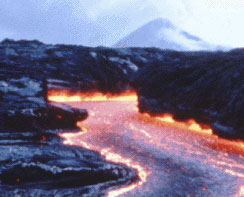
Lava can move in two ways, wide flat lava flows, or through channels which squeeze the lava into a small area. The fastest lava flows move at about 6 mi/hr, an easy jog, but they average between 2/3 and
...more


